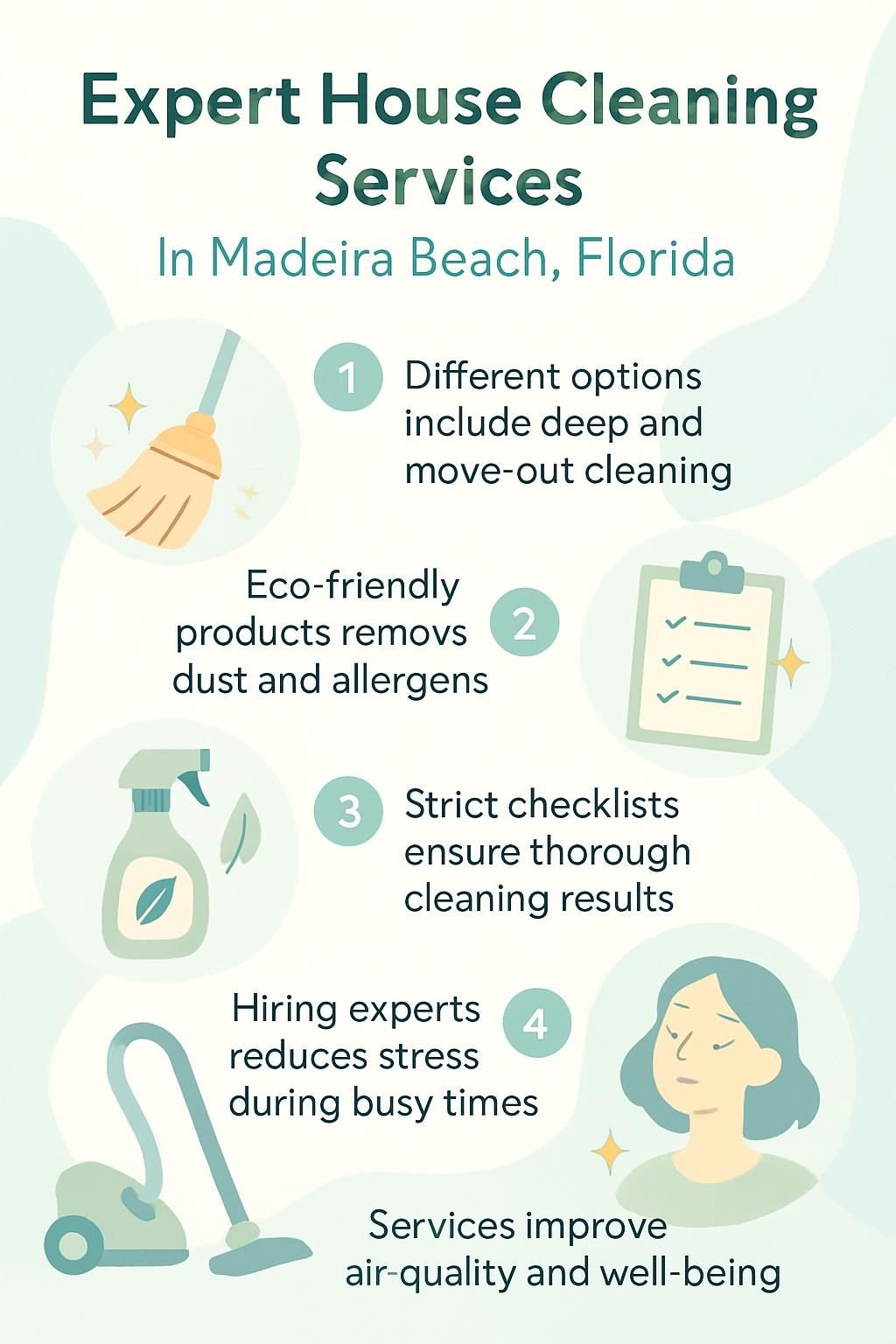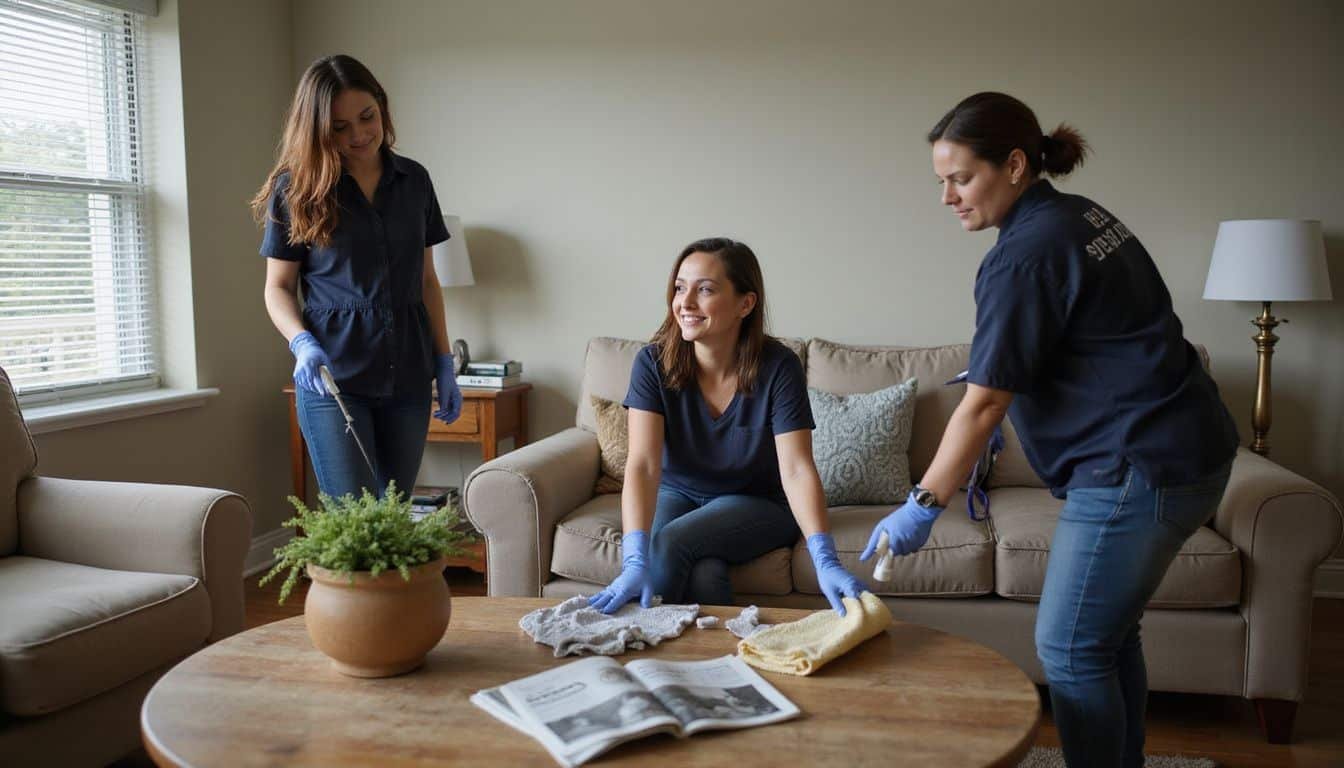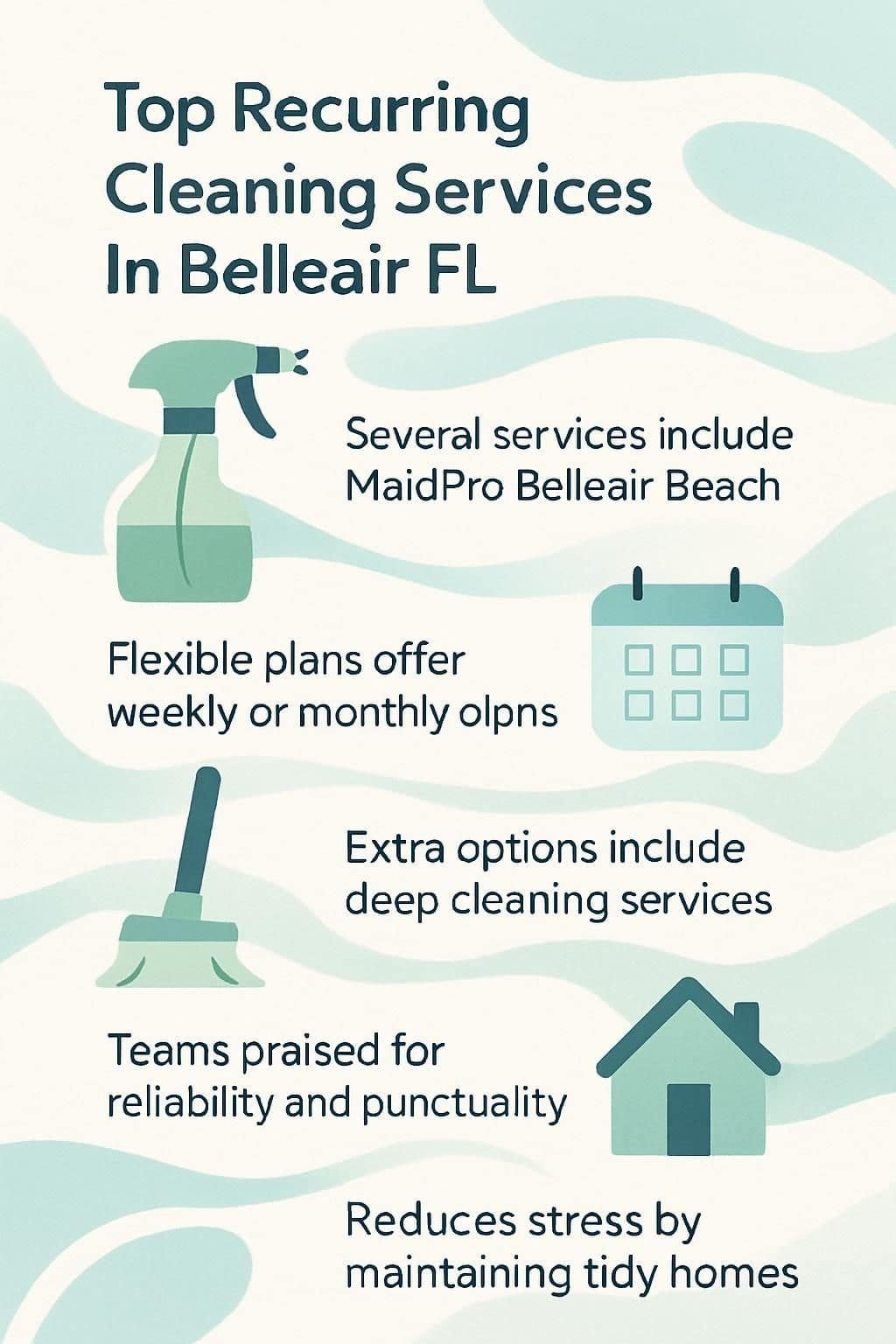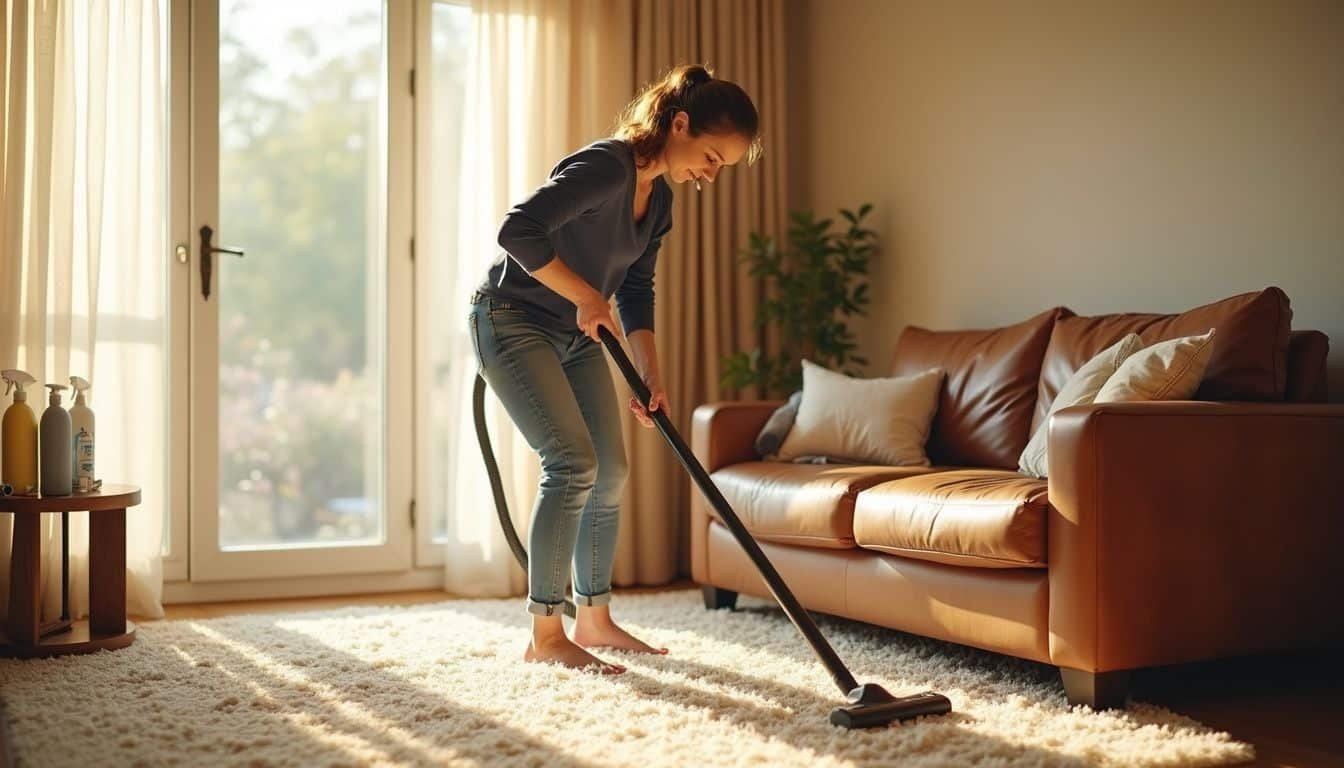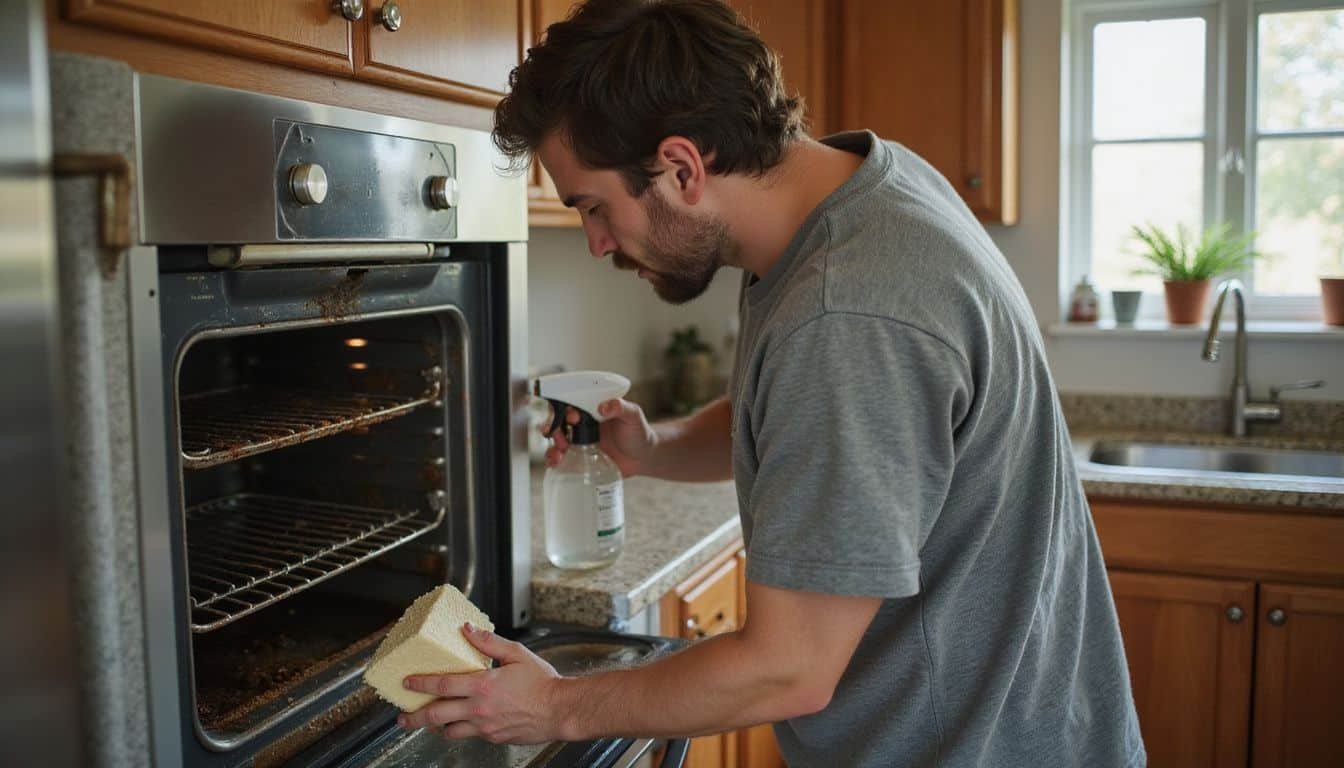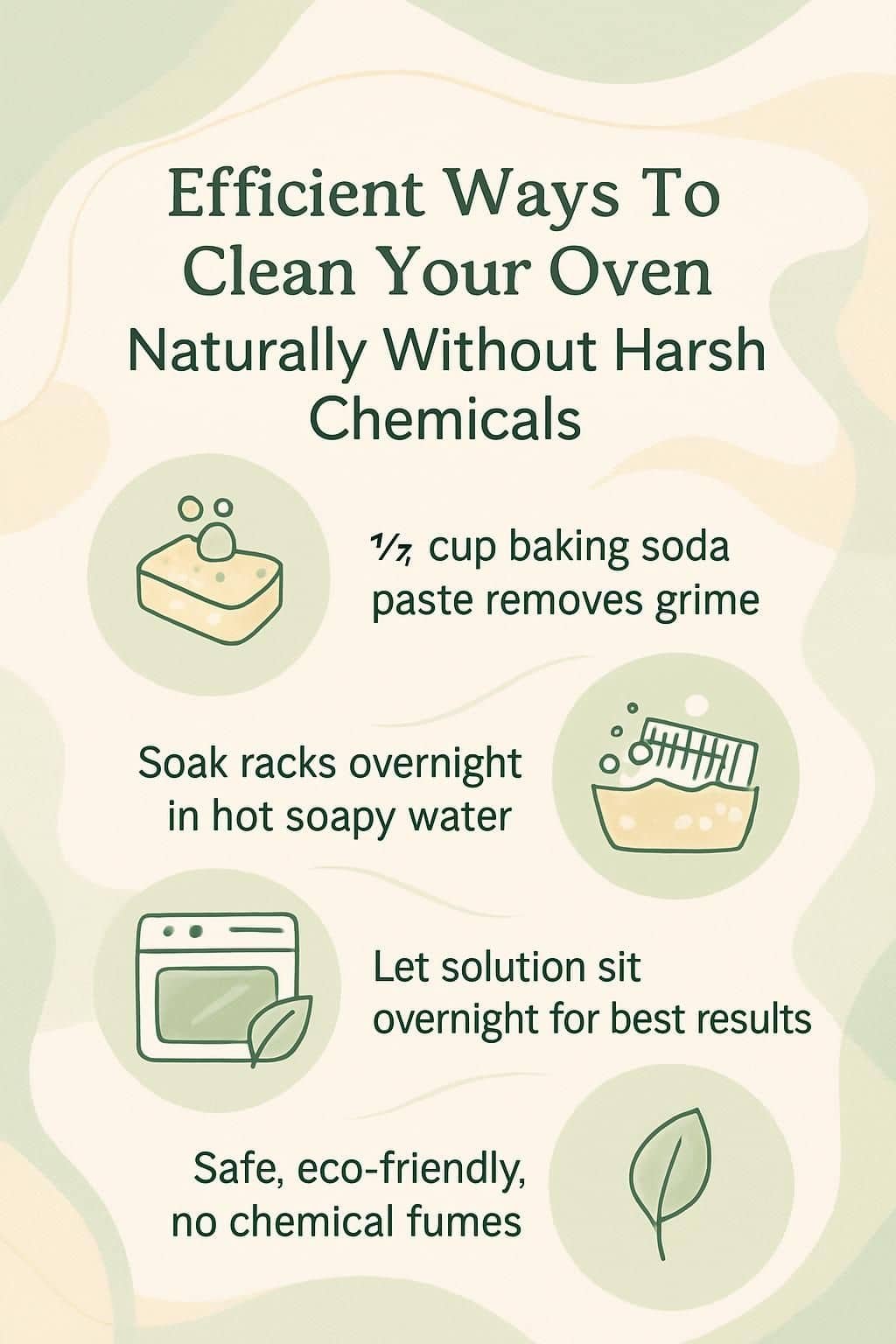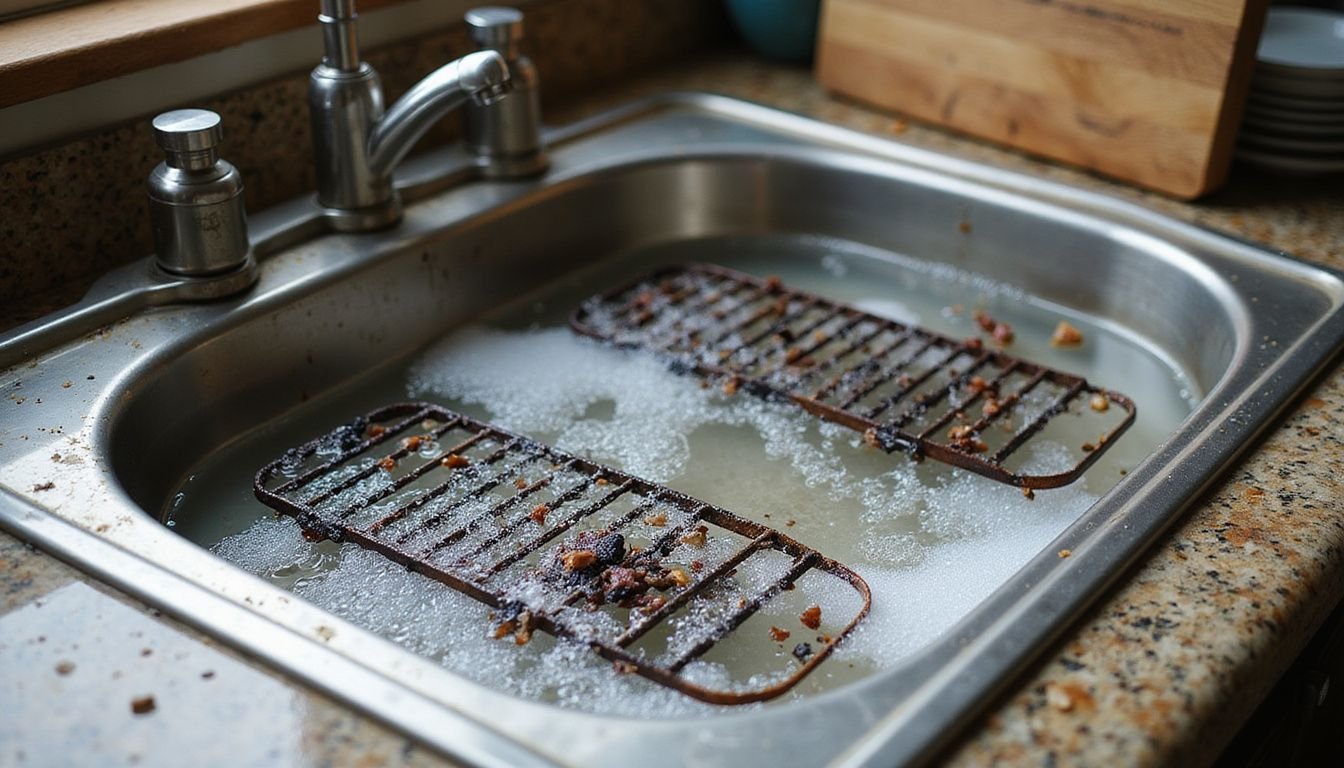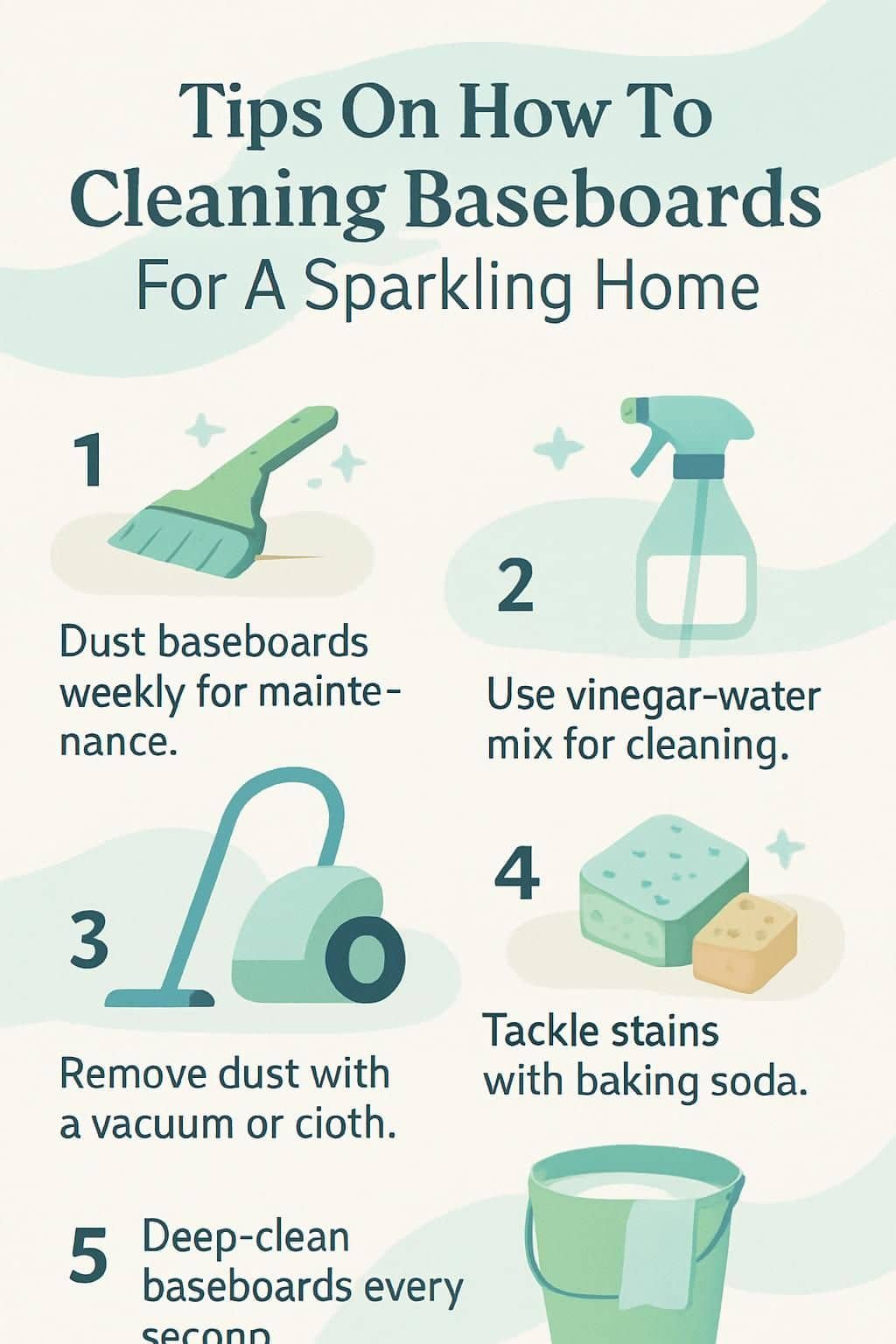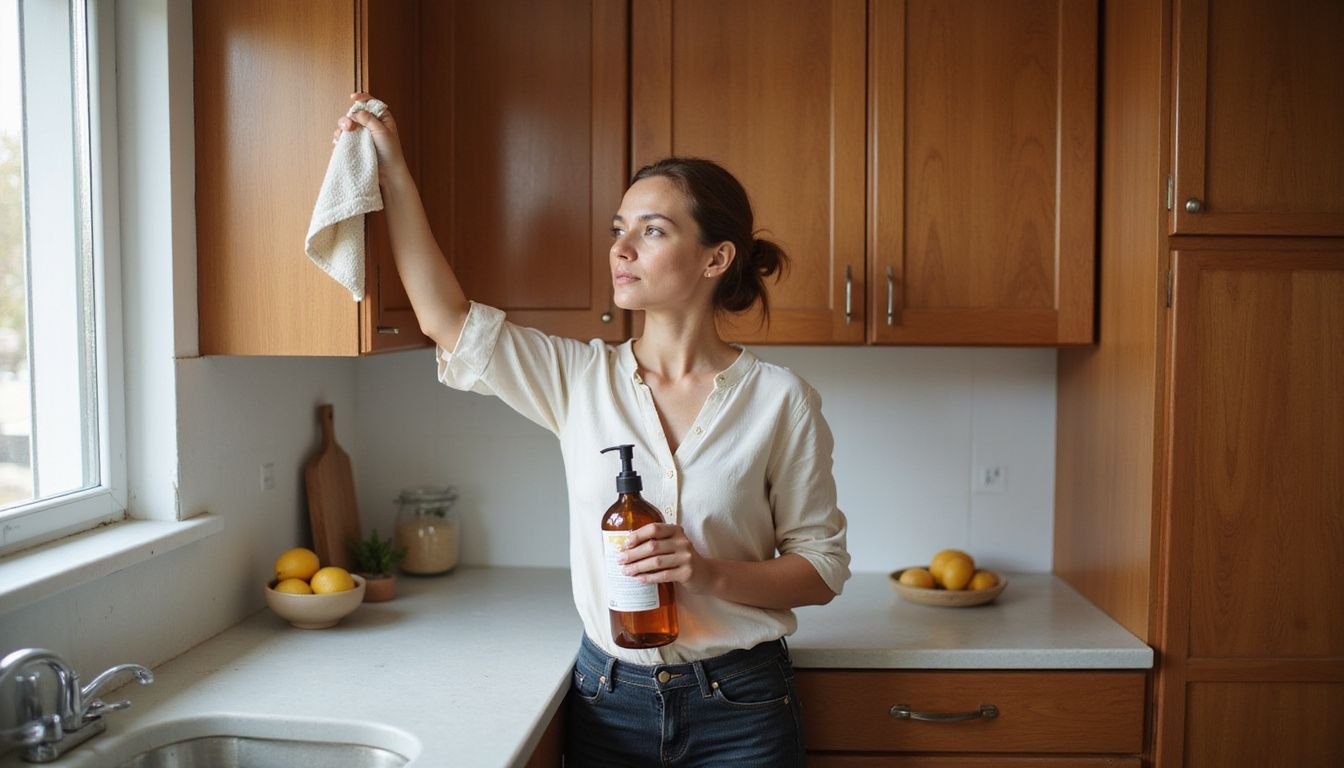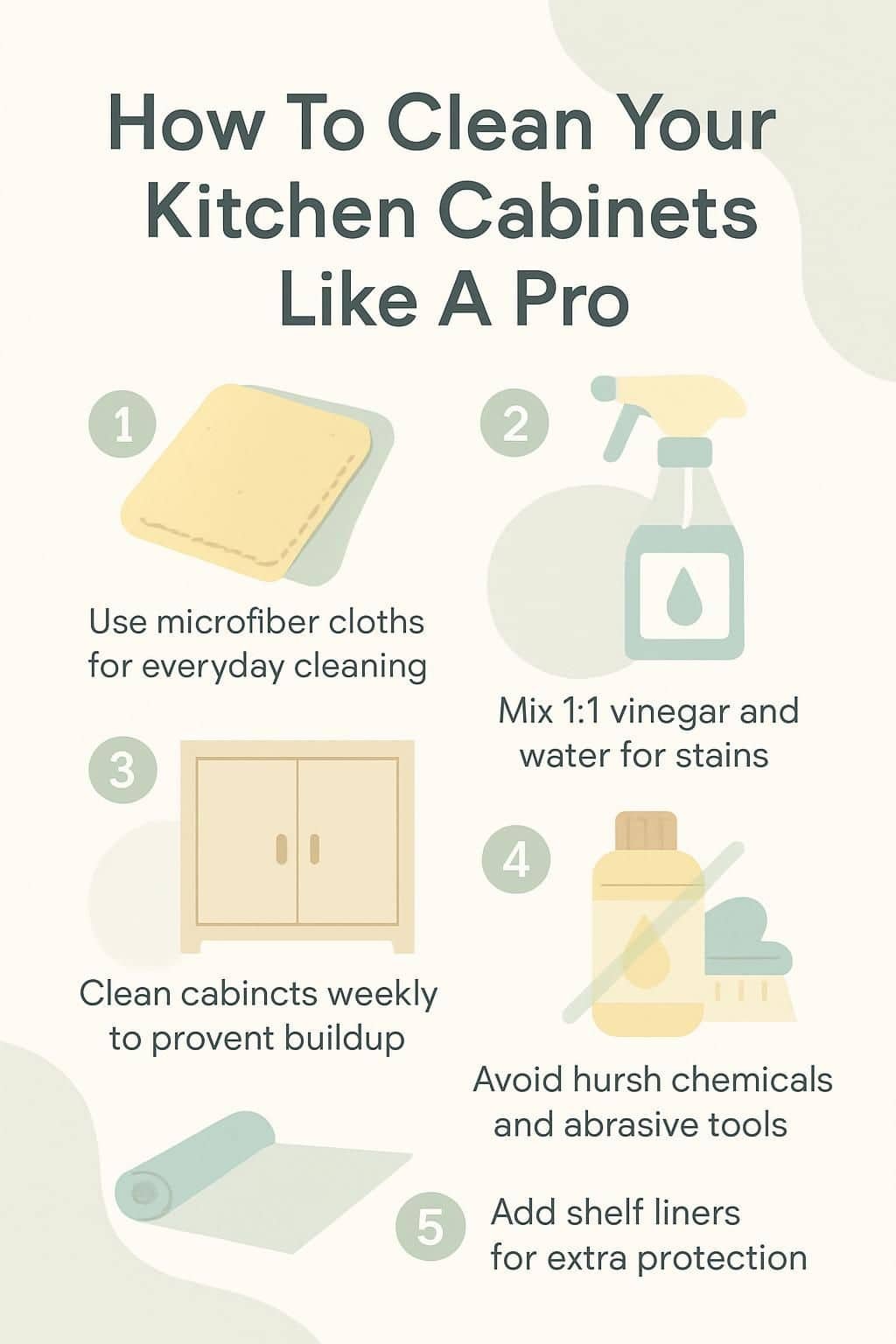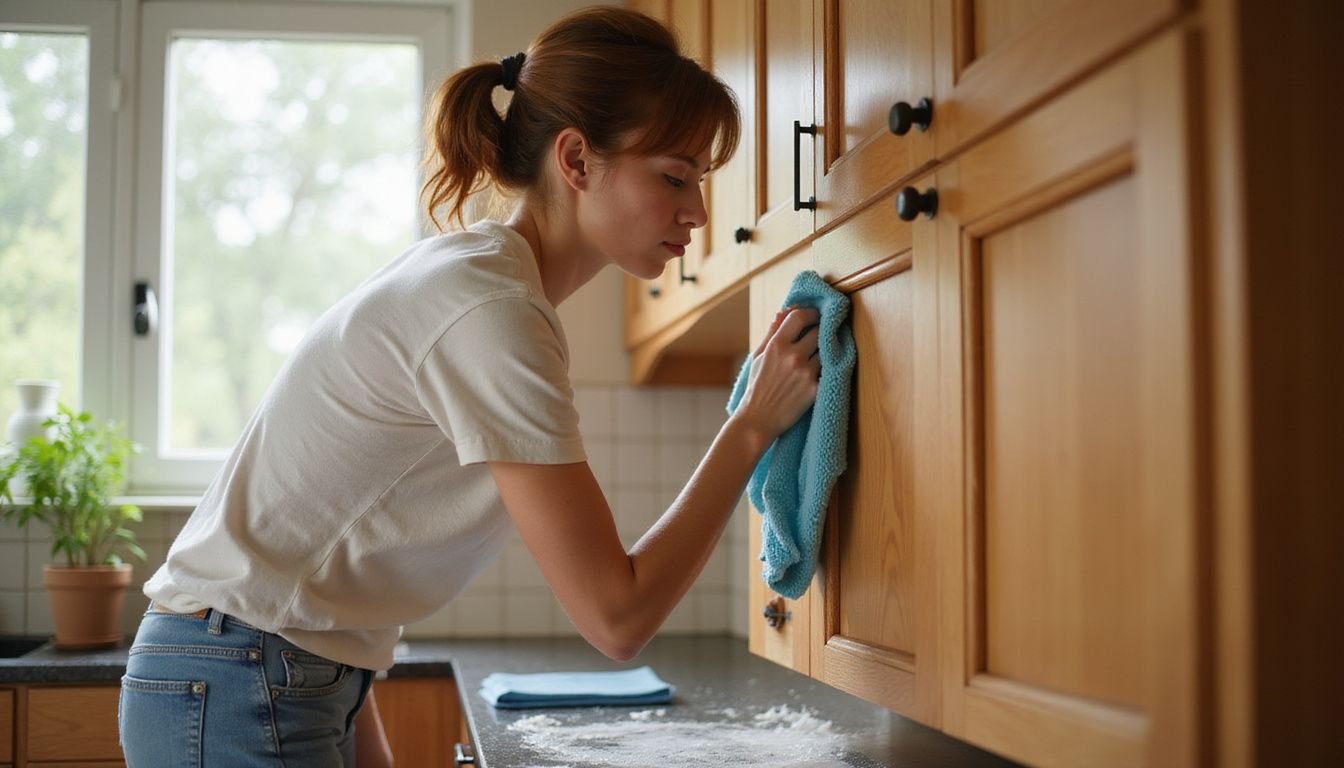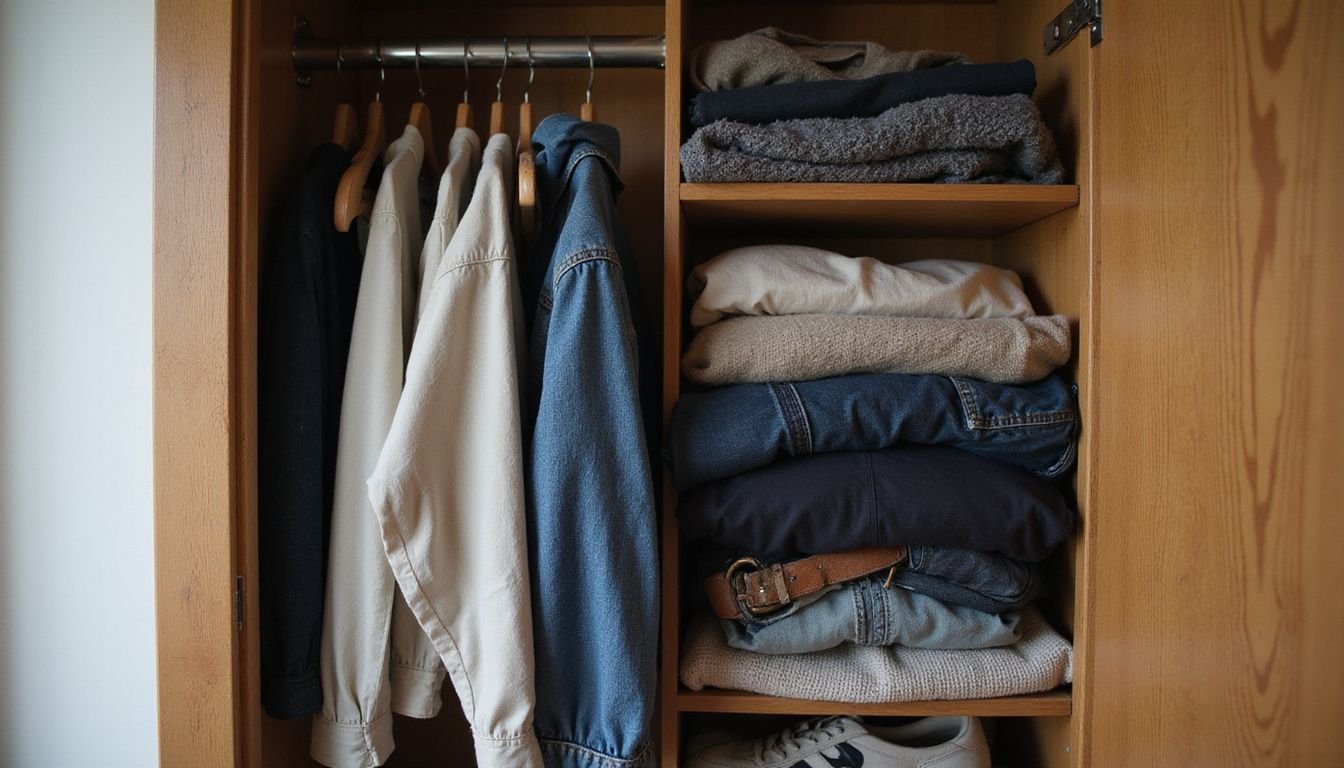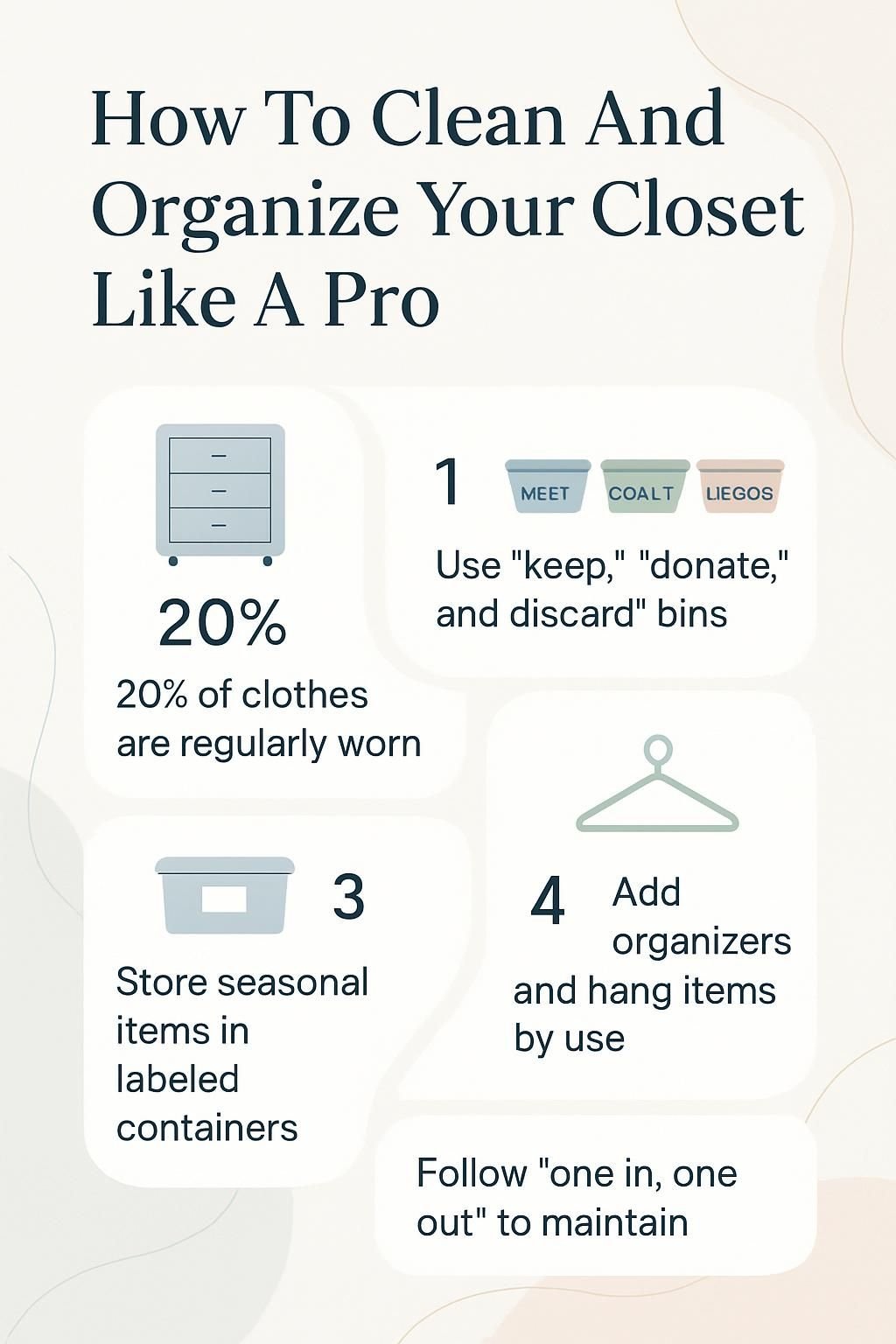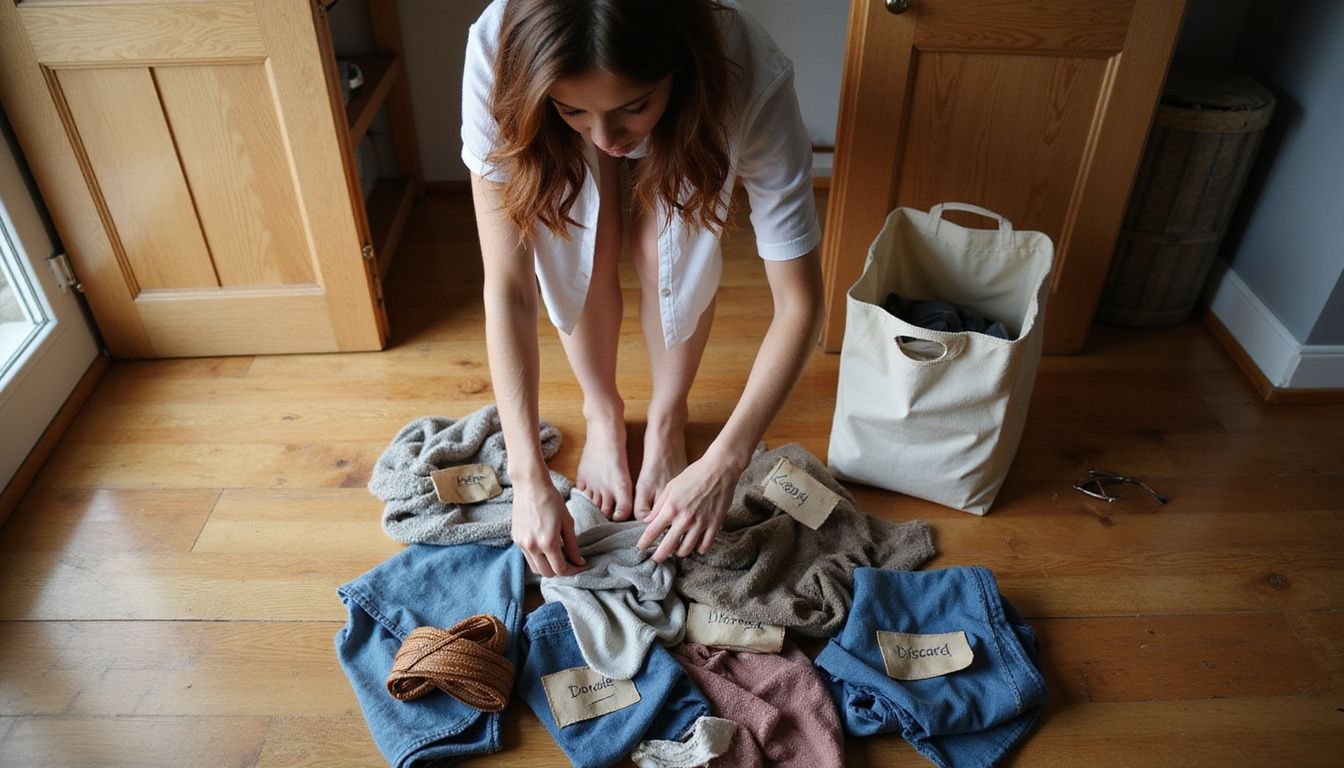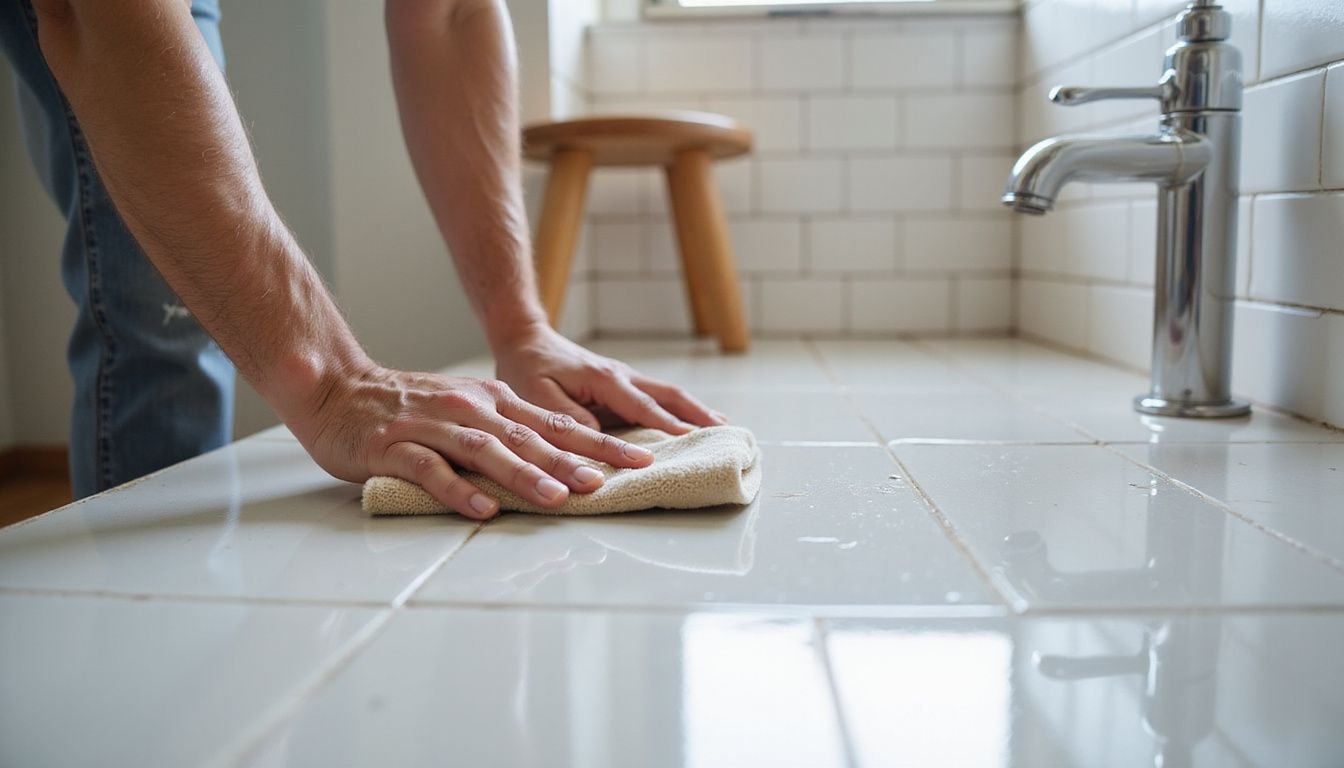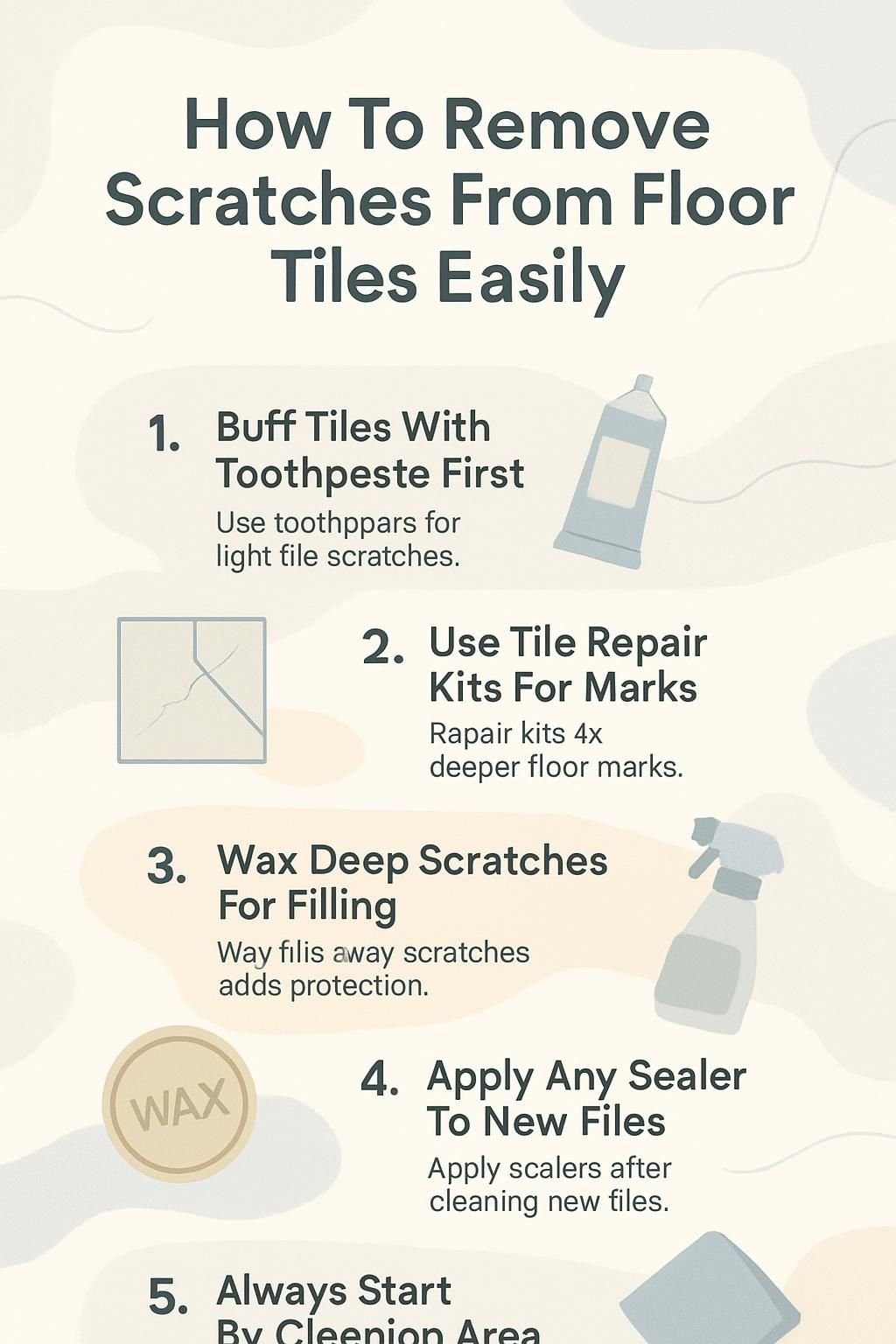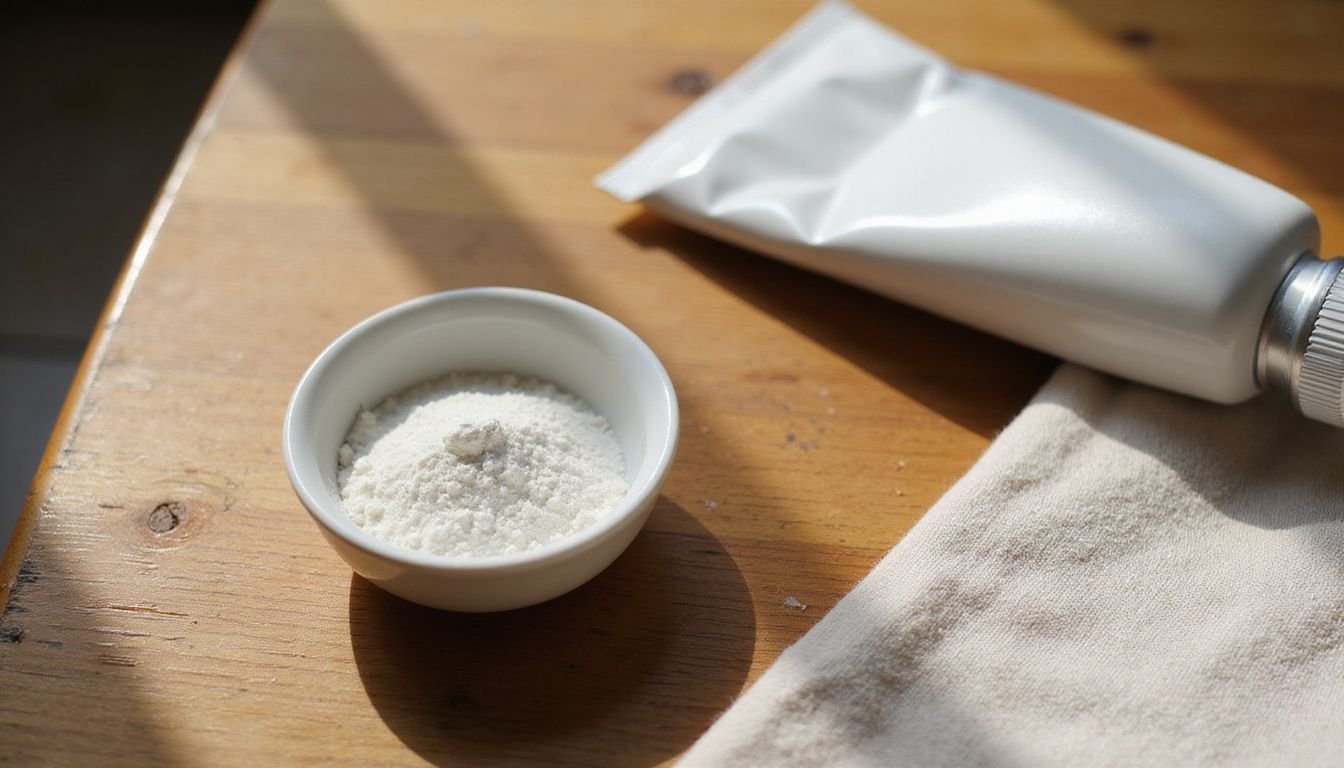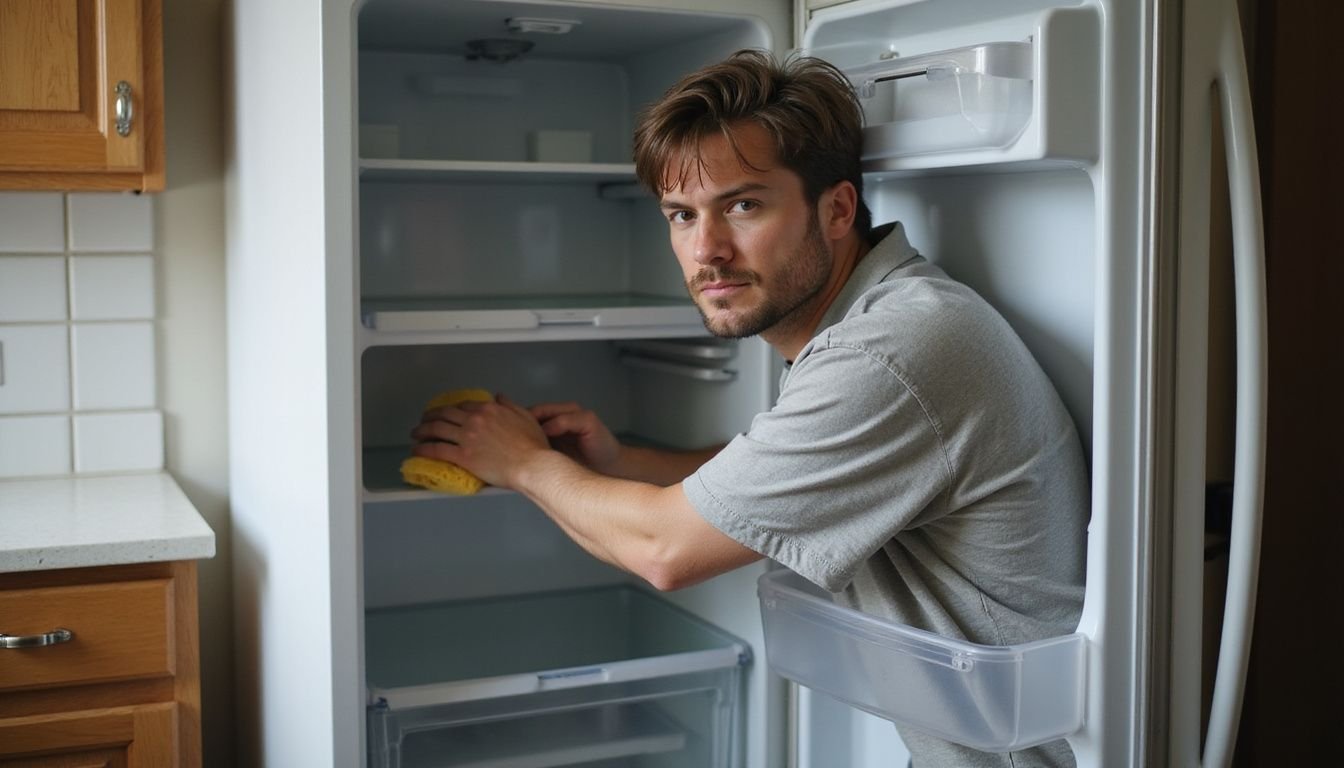Many people feel frustrated with cluttered closets and messy clothes piles. Limited space and a tight budget often make it hard to keep things neat. Finding affordable storage seems almost impossible.
The average person only wears about 20% of the clothing they own, according to closet organization studies. This means that extra items waste valuable space and add stress.
This guide shares clear steps on How To Organize Your Closets On A Budget. Readers will learn how to sort their clothes, use handy storage tools, and find low-cost organizing tips that work for families of any size or age group.
Quick ideas can help turn even small closets into efficient spaces.
Discover smart ways to save money while creating a tidy closet!
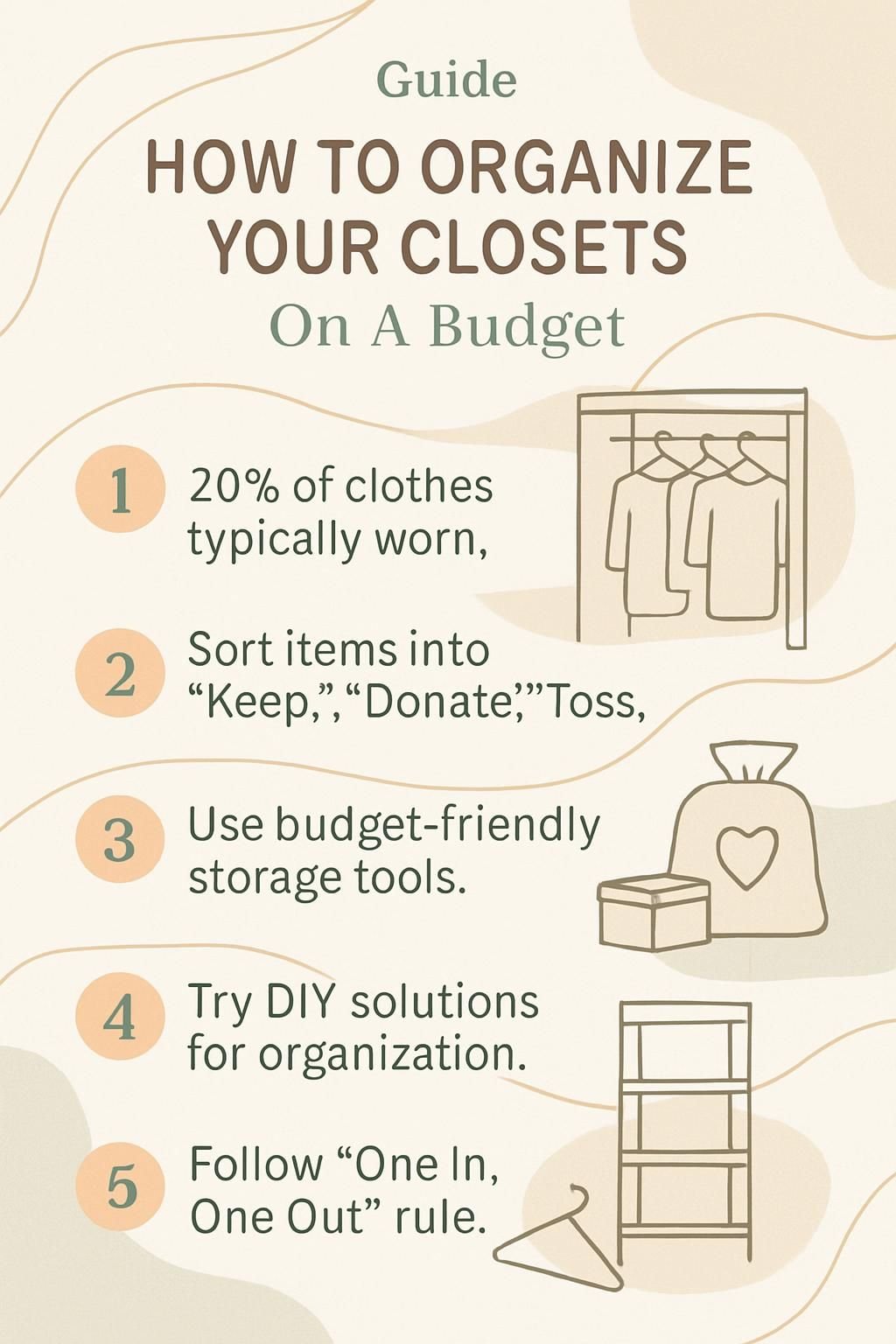
Declutter Your Closet
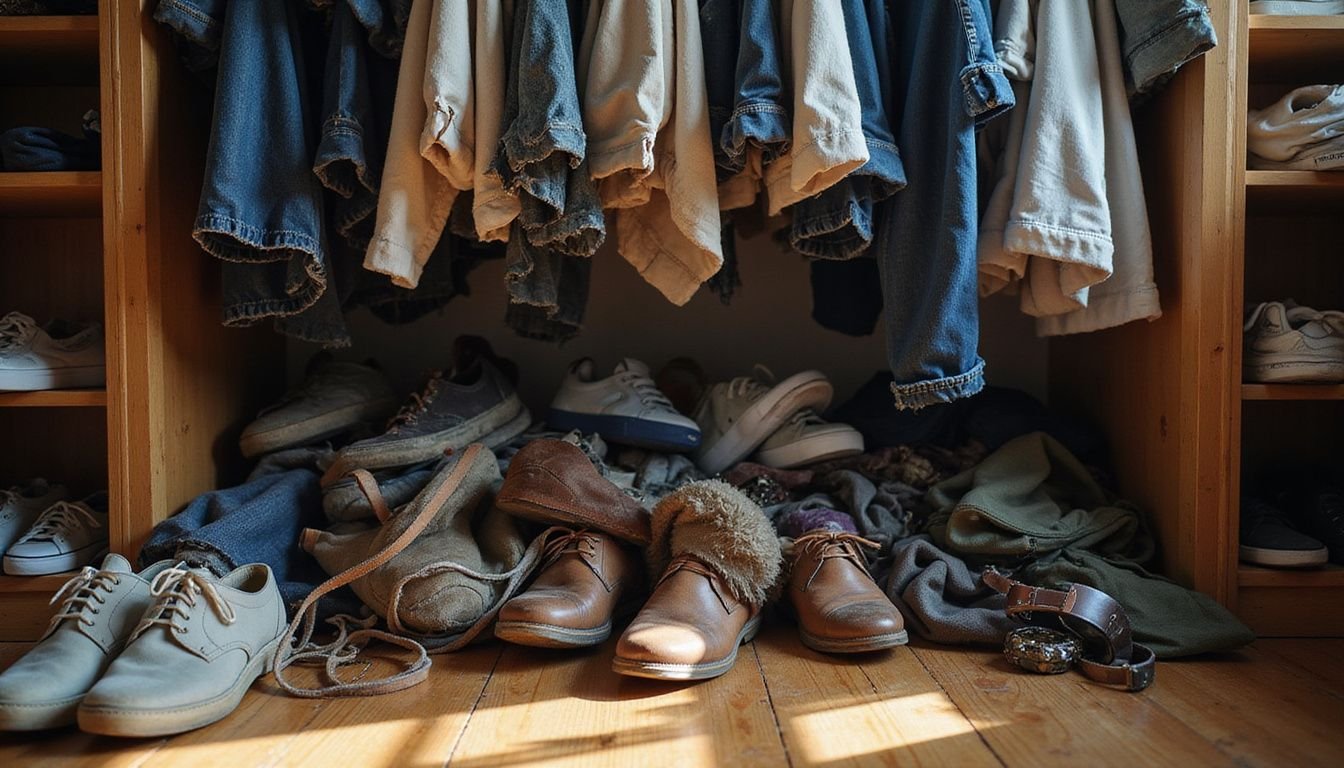
Decluttering brings clarity to your closet. Start by removing everything and sorting items into three piles: keep, donate, and toss.
Remove everything from the closet
Start by taking every item out of the closet. Set clothes, shoes, and accessories on the bed or floor to see exactly what you own. A 2023 survey found that most people use only about 20% of their wardrobe for daily outfits.
Clearing everything at once helps spot forgotten pieces, lost socks, and clutter hidden in corners.
Next, wipe down shelves and rods before sorting items into piles. As designer Marie Kondo suggests,.
The best way to find out what we really need is to get rid of what we don’t.
Emptying the space creates a fresh start for new storage solutions and budget-friendly closet organization methods. This step sets up an efficient path for proper decluttering and wardrobe management without missing anything tucked away in hard-to-reach spots.
Create “Keep,” “Donate,” and “Toss” piles
Organizing a closet on a budget starts with sorting out what you have. House owners and parents need to decide which items to keep, donate, or toss.
- First, take every item out of the closet to see what you have. This step ensures nothing is overlooked.
- Make a pile for items you use regularly and love; this is your “Keep” pile. These are the clothes, accessories, and shoes that fit well and make you feel good.
- Create a “Donate” pile for items in good condition but no longer wanted or needed. Think about local charities or shelters that could use these donations.
- Set up a “Toss” pile for worn-out or damaged items that can’t be donated. Consider recycling centers that accept textiles instead of throwing them in the trash.
- Be honest about each item’s usefulness and emotional value. If you haven’t worn it in over a year, it might be time to let it go.
- Ask for input from family members if you’re unsure about specific items. Sometimes an outsider’s perspective can help make those tough decisions.
- After sorting, pack the donate pile into bags or boxes right away. This prevents any second-guessing of your decisions.
This process helps clear out unnecessary clutter, making way for an organized closet space. Next, categorize and organize the remaining items by type and season.
Categorize and Organize Items
Sorting clothes helps create a clear vision for your closet. Group similar items together by type and season to make finding outfits easier.
Sort clothing by type and season
Group shirts, pants, and dresses together to speed up daily choices. Place summer clothing like shorts and tank tops in one section while keeping sweaters and coats set aside for colder months.
This method helps busy parents find what they need much faster, especially during rushed mornings.
Move out-of-season items to a top shelf or under-bed storage bins as you rotate your wardrobe each season. “You can save time by separating winter clothes from summer staples,” says Melissa Maker of Clean My Space.
Efficient wardrobe management saves space in small closets, making home organization less stressful and more budgetfriendly for families.
Categorize accessories and shoes
Organize accessories and shoes into clear categories. Separate items like belts, scarves, hats, and jewelry. Use boxes or small bins to keep them tidy. For shoes, arrange them by type—sneakers, boots, sandals—and store seasonal footwear together.
This creates a quick way to find what is needed.
Label each container for easy identification. Keep frequently used accessories at eye level; place less-used items higher up or in the back of your closet. Such organization saves time during busy mornings and maximizes closet space effectively.
Maximize Closet Space
Maximizing closet space makes a big difference in organization. Use hanging organizers to create more vertical storage and install an extra rod for additional clothing options.
Use hanging organizers
Hanging organizers offer a simple way to maximize closet space. They keep items visible and accessible, reducing clutter. These organizers come in different styles, including pockets for accessories or compartments for shoes.
House owners can easily hang them on doors or rods.
With hanging options, parents can teach kids about organization early on. Kids can learn to store toys and clothes neatly while developing responsibility. This method also saves time during busy mornings as everything stays within reach.
Using hanging organizers transforms an ordinary closet into an efficient storage solution without breaking the bank.
Install an extra closet rod
Installing an extra closet rod can significantly boost storage space. This simple addition allows for more hanging options, organizing clothes by type or season. House owners can easily create a dedicated section for shorter items like shirts and blouses while saving room below for longer garments.
Use sturdy brackets to secure the new rod at a comfortable height. Measure twice to ensure proper placement and avoid any mistakes. With this simple solution, parents will find it easier to manage children’s clothing and keep closets tidy.
Next, consider adding shelves or dividers for even greater organization in your closet space.
Add shelves or dividers
After installing an extra closet rod, adding shelves or dividers can further transform your closet space. Shelves provide much-needed storage for bulky items like shoes and bags. They create a dedicated spot that keeps everything organized and within reach.
Dividers help separate various types of clothing or accessories on the shelves. By using them, house owners can easily access items without creating chaos. This simple addition maximizes vertical space while keeping the area neat.
Investing in affordable shelving options makes it easy to find budget-friendly solutions that work well for any home organization strategy.
Budget-Friendly Closet Accessories
Budget-friendly closet accessories can transform any space without breaking the bank. Simple items like slim, nonslip hangers keep clothes neat and maximize room.
Invest in slim, nonslip hangers
Slim, nonslip hangers transform closet organization by creating more space. They maximize vertical storage while preventing clothes from slipping off. Parents and homeowners can fit more items side by side without sacrificing style or functionality.
These hangers come in various materials like velvet or plastic, providing a non-slip surface. This helps maintain the shape of garments and keeps outfits looking neat. Investing in these organizers enhances wardrobe management, making daily selection easier for busy households.
Use bins and baskets for small items
Invest in bins and baskets to organize small items effectively. These containers keep everything from socks to accessories neat and easy to find. Bins can fit on shelves or under the bed, maximizing storage space.
Baskets add a touch of style while providing practical solutions for managing clutter.
Choose clear bins so you can see contents at a glance. This strategy simplifies locating often-used items like gloves or hats. Use labeled baskets for easy identification of seasonal clothing or toys.
Simple organization techniques enhance closet management without overspending, making it easier for house owners and parents alike to maintain order.
Try over-the-door hooks or racks
Over-the-door hooks or racks provide extra storage without taking up floor space. These versatile accessories attach easily to any door. They can hold bags, hats, and even jackets, making them ideal for busy families.
Using these items helps keep the closet organized and clutter-free. Homeowners save valuable space while maintaining a tidy appearance in their closets. This budget-friendly solution maximizes closet organization effortlessly.
DIY Storage Solutions
DIY storage solutions provide creative ways to maximize space without spending much. Repurposing old boxes can create stylish storage bins that fit various items. Using cardboard as dividers helps keep everything organized.
Tension rods can add extra hanging capacity easily. Explore these methods for a functional closet on a budget!
Repurpose old boxes as storage bins
Old boxes can easily transform into practical storage bins. Start by selecting sturdy cardboard or wooden boxes that fit your space. Cover them with decorative paper or fabric to add a personal touch.
Use these boxes to store seasonal items, toys, or even extra blankets.
Label each box for easy identification. This simple step aids in maintaining an organized closet and keeps everything within reach. Repurposing old boxes saves money and reduces waste, making it both a budget-friendly and eco-friendly solution for closet organization.
Create dividers using cardboard
Repurposing old boxes as storage bins can free up space and cut costs. Next, homeowners can create dividers using cardboard to further organize their closets.
Cardboard is an inexpensive material that works well for making dividers. Cut the cardboard into strips of desired width and height. These strips can fit neatly inside shelves or bins.
Place one divider on each side of a stack of shoes or folded clothes, keeping items separated. This approach maximizes closet space while maintaining order without spending much money.
Parents will appreciate how easy it is to access everything without digging through piles of clothing or accessories.
Use tension rods for additional hanging space
Tension rods create extra hanging space without the need for expensive renovations. They fit snugly between walls or inside closets, allowing homeowners to hang scarves, belts, or even lightweight clothing.
This simple solution maximizes vertical space and keeps items organized. Parents can easily separate their children’s clothes by utilizing tension rods in shared closets.
Explore how other budget-friendly closet accessories can help further optimize storage and organization.
Organizing Tips to Stay on Budget
Thrift stores offer great finds for budget-friendly storage tools. Sticking to the “One In, One Out” rule helps control clutter effectively.
Shop thrift stores for storage tools
House owners and parents can find great deals at thrift stores for storage tools. These shops often carry baskets, bins, and organizers at low prices. By shopping here, they save money while finding unique items that fit their needs.
Thrifted containers add character to any closet space.
Savvy shoppers should keep an open mind when browsing these stores. Many hidden gems await discovery among the shelves. Using thrift store finds can turn clutter into organized bliss without breaking the bank.
Next, learn effective ways to maintain your organized closet for lasting results.
Use “One In, One Out” rule to control clutter
The “One In, One Out” rule helps control clutter effectively. Every time someone brings a new item into their closet, they should remove an old one. This simple guideline makes it easier to manage space and maintain organization.
For instance, if parents buy a new shirt for themselves or their children, they can donate or toss an older piece. This approach reduces clutter while encouraging mindful shopping habits.
It keeps closets neat while ensuring that each item has its place in the wardrobe management strategy.
Maintain Your Organized Closet
To keep an organized closet, regularly assess what you use and need. Label storage areas clearly and place a donation bin nearby for worn-out items.
Routinely edit your closet
Routinely editing your closet helps maintain an organized space. Set aside time every season to go through clothes and accessories. Take everything out of the closet before sorting items into three piles: “Keep,” “Donate,” and “Toss.” This method clears clutter effectively.
During this process, evaluate each item critically. Ask if you have worn it in the past year or if it still fits well. Create a habit of consistent decluttering to prevent future buildup.
Label storage areas for clarity after organizing, which aids in keeping track of what belongs where. Next, explore ways to categorize and organize all your items efficiently.
Label storage areas for clarity
Label each storage area to enhance organization. Clear labels help family members quickly find what they need. Use simple tags for boxes and bins, noting the contents inside. This method prevents confusion and saves time when searching for items.
A well-labeled space promotes accountability in maintaining order. Family members can return items to their proper spots easily. Invest in affordable label makers or use handwritten tags on colored paper for a budget-friendly option.
Keeping everything organized becomes effortless with this clarity in place.
Add a donation bin for worn-out items
A donation bin for worn-out items helps keep the closet tidy. Place it in a convenient spot, like near the closet door. This encourages everyone to toss in clothes or accessories they no longer use.
It simplifies decluttering.
Regularly check this bin and take it to a local charity when it’s full. This action clears space and also benefits others in need. It can be a great way for parents and homeowners to manage clutter and give back to the community effectively.
Creative Hacks for Small Closets
Small closets can challenge even the best organizers. Use clever techniques to make every inch count and transform your space into a functional area.
Store seasonal items under the bed
Storing seasonal items under the bed creates valuable space in closets. This method keeps off-season clothing and decorations out of sight while remaining easily accessible. Use storage bins or vacuum-sealed bags to protect these items from dust and damage.
Place labeled containers neatly beneath the bed for quick identification later on. By implementing this strategy, homeowners can maximize closet organization efficiently, making room for everyday essentials.
Utilizing this hidden storage area helps maintain a clutter-free living space without spending much money on expensive organizing tools.
Use the back of the door for storage
Utilize the back of the door to create extra storage space. Many people overlook this area, but it offers a great solution for organizing small items. Hang over-the-door hooks or racks to hold accessories like bags and hats.
This keeps belongings accessible while freeing up valuable closet space.
Small bins can also attach to the door’s interior, perfect for storing shoes or seasonal items. These clever solutions maximize organization without costing much money. By using the back of the door effectively, homeowners can maintain an orderly closet on a budget.
Hang purses and scarves with “S” hooks
Use “S” hooks to hang purses and scarves. This simple method saves space in small closets. Hang the hooks on a closet rod or over the door. Each hook can hold multiple items, keeping them visible and accessible.
Organizing accessories this way prevents clutter from building up. House owners and parents will find it easier to grab what they need quickly. Plus, it showcases your favorite bags and scarves as part of your decor.
Conclusion
Organizing a closet on a budget can be simple and fun. With some planning, anyone can transform their space without breaking the bank. Decluttering and categorizing items helps create order.
Budget-friendly accessories make storage efficient and stylish. This guide offers practical tips for anyone looking to refresh their closet while saving money.
FAQs
1. How can I organize my closet on a budget?
You can organize your closet on a budget by using affordable storage solutions like bins, baskets, and shelves. Repurpose items you already own to save money while maximizing space.
2. What are some tips for decluttering before organizing?
Start by removing everything from your closet. Sort items into keep, donate, or discard piles. This helps you see what you truly need and makes organizing easier.
3. Are there cost-effective ways to create more space in my closet?
Yes! Use vertical space by adding hooks or stacking shelves. Consider slim hangers to save room and make the most of your available area without spending much.
4. Can DIY projects help with closet organization?
Absolutely! Simple DIY projects can enhance your storage options at low costs. For example, building custom shelves or creating dividers from cardboard can improve organization effectively.


